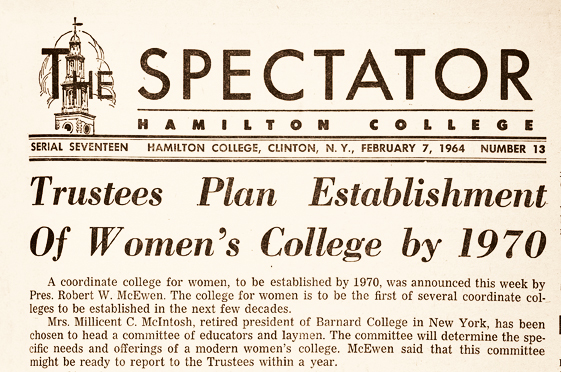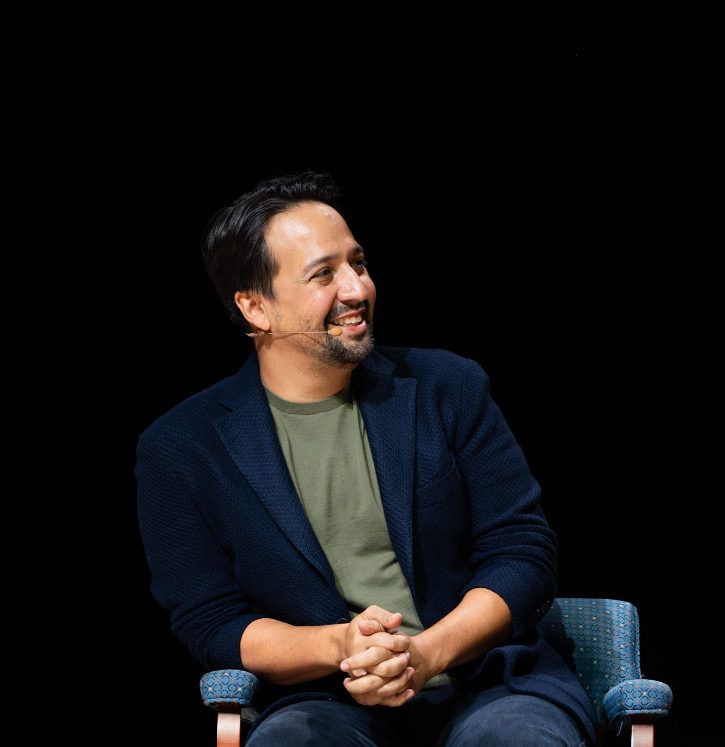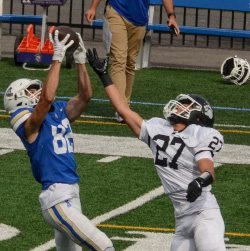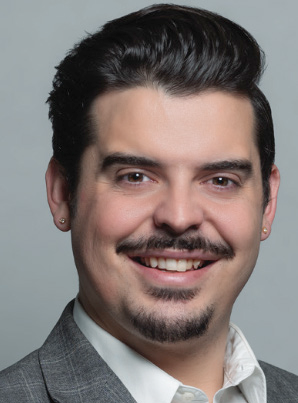
Do you recall Kirkland College, the women’s’ school on the Hill between 1968 and 1978?
The short-lived experiment, which opened over 50 years ago with such great promise, came to a grinding halt when its parent, Hamilton College, would not provide more funding.
Samuel Fisher Babbitt served with distinction as Kirkland College’s only president, and he has written his personal history of the period in
LIMITED ENGAGEMENT Kirkland College 1965–1978: An Intimate History of the Rise & Fall of a Coordinate College for Women
.
The plan was set out by then Hamilton President Robert W. McEwen and was developed by a trustee committee led by Richard W. Couper. Expanding the curriculum became a goal, as many thought the Hamilton offerings were too narrow. McEwen envisioned a “Clinton Cluster” of coordinate colleges similar to a model started by Claremont College in Claremont, California. Though their boards of trustees would be separate, many facilities would be shared between the colleges, such as the library, cafeterias, grounds, student center, infirmary, art center, and theater.
In the early 1960s, Hamilton had about 750 students living on campus in dorms and fraternities. Chartered in 1812, the College had long turned out ministers, doctors, teachers, and lawyers in a traditional and conservative liberal arts way with senior and graying faculty protecting their domains and turf. According to Babbitt, most students were white, male, Protestant, and well-off economically.
Institutions don’t change quickly or easily, but in January 1965 the Hamilton Board approved the application to the New York State Board of Regents for a charter to establish a new college for women. The act transferred 68 acres of land on the south side of College Hill Road and guaranteed funds up to $500,000 for start-up costs.
Enter Samuel Fisher Babbitt to the mix.
He was an assistant dean at Yale Graduate School and was hired in February 1966 to become, as it turned out, Kirkland’s only president. Babbitt set out to hire faculty and staff, design curriculum, accumulate financial support, attract students, establish a relationship with Hamilton College, and make innovative and ambitious plans for one of the first new women’s colleges in decades.
“Non-traditional” is used by Babbitt to describe what Kirkland College attempted to accomplish. It had divisions instead of academic departments, evaluations instead of grades, concentrations instead of majors, and residential freedom instead of curfews. Diversity, transparency, faculty dorm residents, flexibility, free inquiry, a Co-op Dorm, independent study, a Senior Project, a Student Assembly to set governance policies, students on committees, self-renewal, and self evaluation became established procedures that differed from more traditional colleges.
Unfortunately for Kirkland College, Hamilton President McEwen suffered a heart attack in March 1966 and died in 1967, causing the fledgling experiment to lose its mentor and spiritual leader. Babbitt, however, plugged ahead and greeted the first class of 1972 in September 1968. Much of his time was devoted to finances and developing policies with students and faculty for the new college. Finances continued to be a problem and eventually caused Hamilton to re-examine its initial commitment.
In the 1976–77 academic year, things came to a head with a new Hamilton President — J. Martin Carovano, who succeeded John Chandler in 1974. According to Babbitt, Caravano never was too enthused about Kirkland’s beginning when he was on the Hamilton economics faculty, and after becoming president, he reviewed the finances and coordination problems that had developed.
Babbitt writes that in May 1977, “The Hamilton Board heard from its President that Kirkland was an inferior educational institution — essentially a flash in the pan, which had a brief vogue in the ‘60’s, but which could no longer attract students which would seriously compromise Hamilton’s academic reputation if allowed to continue.”
In summer of 1977, the Kirkland Board reluctantly agreed to merge or consolidate with Hamilton College effective July 1, 1978; in February 1978, the Board of Regents voted to dissolve Kirkland’s charter.
Hamilton then became co-ed with merged faculty and students. The “Kirkland Dream” has ended although green apples, the symbol of Kirkland, still emerge each year at graduation ceremonies when some seniors place a green apple on the lectern as they receive their diplomas.
This article has only touched on Kirkland history in brief. A reading of Babbitt’s book is recommended for his insights and complete analysis of Kirkland College from 1965–1978.

























